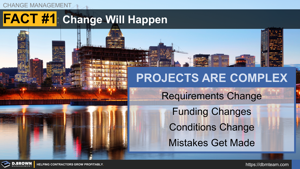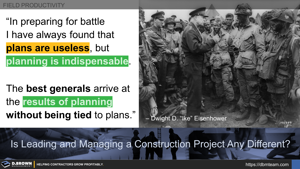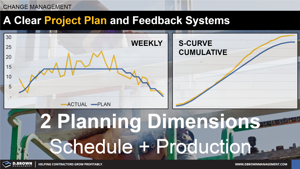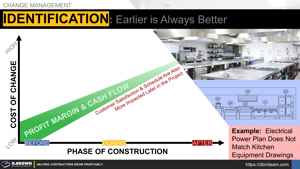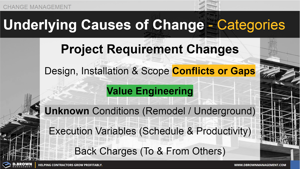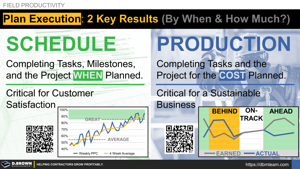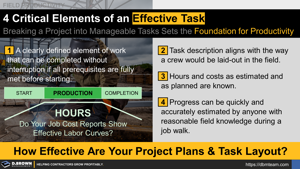Change Management Fact #1 - It Will Happen
Projects are complex with evolving requirements and changing site conditions. Mistakes will be made. It is how the collective project team manages these changes that ultimately determines success at all levels.
change management preconstruction project management project planningPlanning and Preparing for Unknowns
When faced with many unknowns, it is important to plan and prepare for multiple scenarios while holding off on being decisive until the last responsible moment.
business planning field operations field productivity project management project planningTwo Planning Dimensions
Some of the impacts you see on a project are not as clear as a design change, conflict, or obviously changed condition. Some impacts, such as poor project sequencing or congested work areas are hard to notice if you don’t have good tracking systems.
budget management change management foreman training project management project planning schedule managementChanges - Early Identification is Always Better
Early identification of changes and conflicts is the first key to success. The capability to identify changes and conflicts early in the process is a combination of organizational structure, systems, management, training, and coaching.
cash flow customer satisfaction estimating foreman training labor productivity preconstruction project management project planningUnderlying Causes of Changes on Projects
Start improving your change management skills by creating some categories of the underlying causes of changes your company experiences.
change management foreman training preconstruction project management project planningTwo Key Results for Project Planning
There are two critical key results that should be focused on as part of every project planning process.
budget management change management foreman training labor productivity project management project planning schedule managementPlanning - Integrating the 4 Key Responsibilities
Effective planning combined with regular feedback (at least weekly) combined with a structured look at how to improve each week is the key to integrating the four key responsibilities of a Foreman.
foreman training labor productivity project planningFour Critical Elements of an Effective Task
Maximizing labor productivity starts with defining exactly what needs to be delivered and then breaking it down into tasks that can be effectively managed.
change management foreman training labor productivity project management project planning schedule management